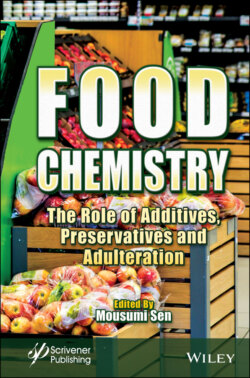Читать книгу Food Chemistry - Группа авторов - Страница 40
1.9 Oils and Spices
ОглавлениеThese are used as preservatives in pickles. Oil makes a protective covering and prevents contact of microorganisms and air with the food. Spices do not have bactericidal effect in concentrations usually used. Cinnamon and cloves containing cinnamic anhydride and eugenol, respectively, are more bacteriostatic than other spices. Extracts of garlic onion cabbage are inhibitory to Bacillus subtilis and E. coli [92].
The essential oils are the liquids that are extracted from the plant materials (such as fruits, flowers, barks, and peel), which are aromatic and volatile in nature. There are many uses of essential oils such as in medicine, perfumes, cosmetics, and as food spice and preservative. The initial use of essential oil was in medicine in the 19th century then they were used as odor and flavor ingredients and their business and usage increased in this field and became the priority. Out of 3,000 essential oils which are known yet, 300 out of them are used in the fragrances and flavor industry.
Essential oils has antimicrobial properties so they are regarded as secondary metabolites and they are essential for flora defense. Secondary metabolites “antimicrobial” property was tested by using vapors of essential oils by De la in 1881. From then, essential oils have been proved as the greatest examples that shows this property [94], and not only antimicrobial but also insecticidal, antiparasitic and antioxidant properties too. They act as the builders for the growth of animals.
In spite of the fact that the food business utilizes essential oils as flavoring agents, they also proved to be as the major source of antimicrobials in the process of food preservation. But, one should have all the knowledge about the properties of essential oils, i.e., the MIC (minimum inhibitory concentration), the mode of action, the range of target organisms, and the impact of food matrix components on their antimicrobial properties.
The diversity of compounds is created by plants containing antimicrobial activity. Some are constantly present while others are delivered because of the physical injury or microbial invasion. Essential oils are the blend of at least 45 various components so recognizing the most active component is not an easy task. There are various methods to extract the oil by mixing few components. Essential oils is widely spread family of organic compounds having low molecular weight with having huge contrasts in the antimicrobial activity [96]. There are four divisions in the active compounds as indicated by their chemical structures which are terpenoids, terpenes, phenylpropenes, and others.
